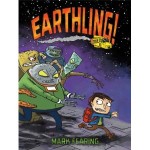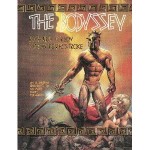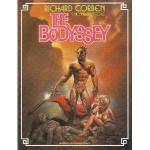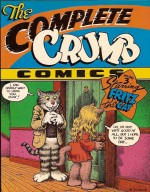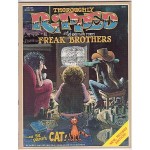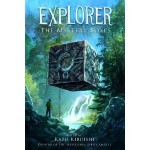
By various, edited by Kazu Kibuishi (Amulet)
ISBNs: HB 978-1-4197-0010-1Â Â PB 978-1-4197-0009-5
Here’s another superb entry into the burgeoning Young Adults graphic novel market that offers a wonderful alternative to Fights ‘n’ Tights furores and interminable extended storylines that will appeal to fans of the art form and fantasy freaks alike.
Edited by Kazu Kibuishi who created the impressive sorcerous saga Amulet, this captivating anthology collection offers seven thought-provoking and decidedly different tales by a coterie of animators and comics-creators all turning their fertile imaginations and illustrative talents to expanding and elucidating upon the core concept of an enigmatic container…
The wonderment begins with a spooky fable by Emily Carroll wherein a solitary and much put-upon girl discovers a very special doll and far more than she bargained for ‘Under the Floorboards’…
‘Spring Cleaning’ by Dave Roman & Raina Telgemeier is a wry and jolly escapade with lazy Oliver finally picking up his toys and discovering a puzzle box he didn’t know he owned. When he tries to sell the thing online all manner of very strange and insistent people start making outrageous and impossible offers…
Jason Caffoe follows a more tradition route as his young warrior overcomes all manner of fantastic odds to win ‘The Keeper’s Treasure’. Of course not everybody agrees on what constitutes fabulous wealth…
‘The Butter Thief’ by Rad Sechrist sees a little girl discover her grandmother’s ineffable wisdom and magical practicality after freeing a thieving spirit from a kitchen trap and undergoing a startling metamorphosis whilst ‘The Soldier’s Daughter’ (by Stuart Livingston with Stephanie Ramirez) reveals the true cost of vengeance as young Clara picks up her murdered father’s sword and mission. Mercifully a mysterious stranger shows her another path in his enthralling cask of wonders…
Johane Matte & Saymone Phanekham display stunning comic timing and astounding fast-paced imagination in the wicked tale of ‘Deet’; a much-maligned junior intergalactic shipping clerk dealing with workplace bullying in the most effective manner conceivable after which editor Kazu Kibuishi brings the perplexing odyssey of a spectacular close with ‘The Escape Option’ as a troubled boy finds an incredible artefact and is presented with an impossible, life-changing, world altering choice…
These dark, beguiling, funny and enticing adventures blend traditional story elements with an inspired eye for the contemporary kid’s broad spectrum of fascinations: warriors, aliens, robots, cartoon animals, rocket-ships, monsters, isolation, alienation, magical quests and glorious battles; all delivered with sly wit and breathtaking exuberance to create a splendid portmanteau rollercoaster ride of laughter, tears, terrors and triumphs.
This a perfect introduction or reintroduction to comics for kids of all ages looking for something beyond the ordinary and hopefully the start of a long line of thematic sequels…
Explorers is scheduled for a March 2012 release in the UK but available for pre-order now in both hardback and paperback editions.
Cover and The Escape Option © 2012 Kazu Kibuishi. Under the Floorboards © 2012 Emily Carroll. Spring Cleaning © 2012 Dave Roman & Raina Telgemeier. The Keeper’s Treasure © 2012 Jason Caffoe. The Butter Thief © 2012 Rad Sechrist. The Soldier’s Daughter © 2012 Stuart Livingston. Whatzit © 2012 Johane Matte. Published by Amulet Books, an imprint of Abrams. All rights reserved.

